Can I Put Silk in the Dryer? Essential Guide to Silk Care
You’ve probably asked yourself this question before: “Can I put silk in the dryer?” It’s a valid concern, as silk is a delicate and luxurious fabric that requires special care.
As a silk enthusiast, I understand the importance of maintaining the quality and longevity of your silk garments.
In this comprehensive guide, we’ll explore the risks of drying silk in a dryer, the best dryer settings for silk (if you must), and safer silk-drying alternatives to ensure your silk items remain in pristine condition.
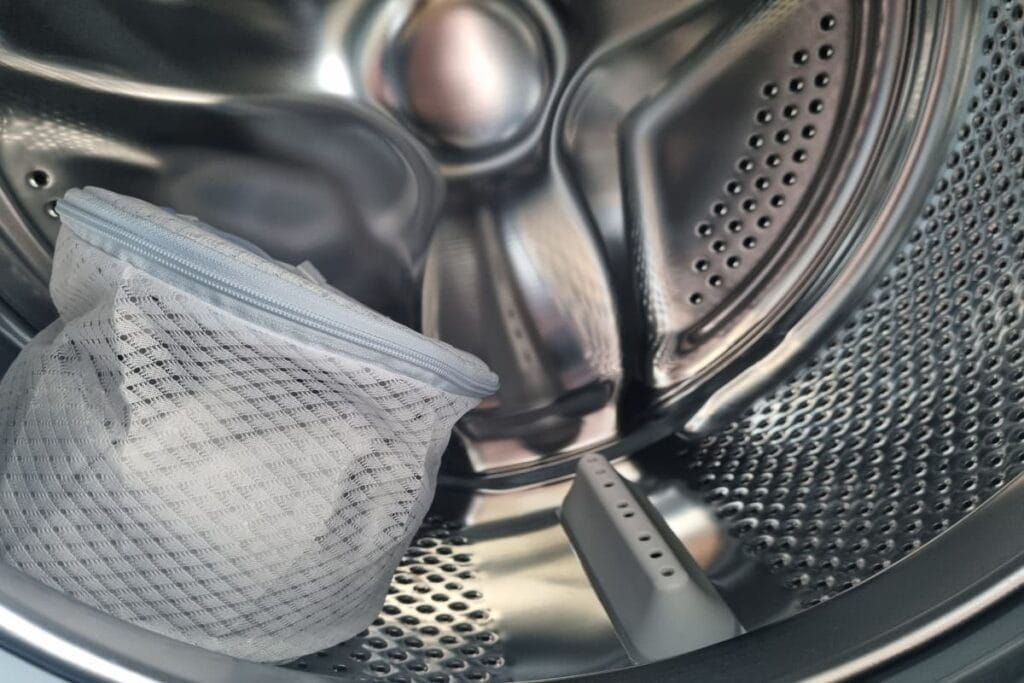
The Risks of Drying Silk in a Dryer
Let’s start with the harsh reality: silk and dryers are not the best of friends. Putting silk in a dryer can lead to some undesirable consequences. Here’s what happens:
- Heat Damage: Silk is a protein fiber that’s highly sensitive to heat. The high temperatures in a dryer can cause the silk fibers to become brittle, leading to cracks and eventual shredding.
- Shrinkage: Yep, you guessed it. Silk has a tendency to shrink when exposed to heat and mechanical action, which is exactly what a dryer provides.
- Loss of Luster: Silk is prized for its beautiful sheen and luster. Sadly, the tumbling and heat in a dryer can cause the silk fibers to become dull and lifeless.
Here are some common concerns addressed:
- Does silk shrink in the dryer? Absolutely! Heat and agitation are the perfect recipe for silk shrinkage.
- Can drying cause damage to silk fabrics? Without a doubt. The combination of high heat and mechanical action can lead to irreversible damage, including weakening of the fibers, loss of sheen, and even holes or tears.
Let me share my tips for safely drying silk without using heat, a practice that has extended the life of my silk garments.
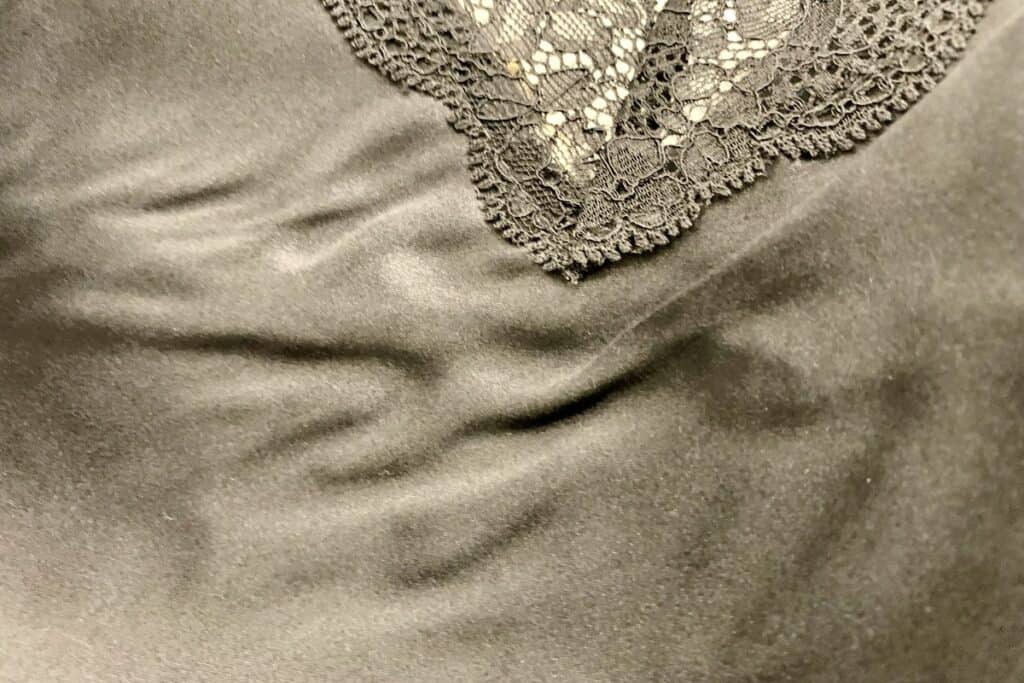
How Silk Reacts to the Dryer Compared to Other Common Fabrics
When it comes to the dryer, not all fabrics are equal. Some can withstand the heat and tumbling, while others (like silk) are more delicate and prone to damage. Let’s compare:
- Cotton and linen can typically handle dryer use reasonably well, though linen may wrinkle if over-dried.
- Wool requires more care, as the heat and agitation can cause felting, shrinkage, and loss of shape. Air-drying is often recommended.
- Polyester, being synthetic, is generally dryer-friendly and can withstand high heat and tumbling.
- Silk, on the other hand, is highly sensitive to heat and mechanical action, making it prone to shrinkage, loss of luster, and potential fiber damage in the dryer.
To visualize the differences, here’s a handy table comparing silk to other common fabrics and their dryer compatibility:
| Fabric | Heat Tolerance | Shrinkage Risk | Dryer Compatibility |
| Cotton | High | Low to Moderate | Good |
| Linen | Moderate | Moderate | Good (Remove Promptly) |
| Wool | Low | High | Poor (Air Dry Recommended) |
| Polyester | High | Low | Excellent |
| Silk | Very Low | Very High | Very Poor (Air Dry Only) |
As you can see, silk stands out as one of the least dryer-friendly fabrics, making air-drying the safest and most recommended option for preserving its unique qualities.
I had to find out if satin silk can survive the dryer, and here are my findings.

Best Dryer Settings for Silk (If You Must)
Now, I know what you’re thinking: “But what if I really need to use the dryer for my silk?” While I strongly advise against it, there are some dryer settings that are slightly safer than others:
- Delicate or Air Dry Cycle: These settings use lower temperatures and less tumbling action, minimizing the risk of heat damage and shrinkage.
- No Heat or Air Fluff Setting: This setting simply circulates air without adding heat, which can help remove some moisture from your silk items.
However, even with these gentler settings, there’s still a risk of damage. It’s essential to check your silk garments frequently and remove them as soon as they’re dry.
Special Considerations for Silk Pillowcases and Sheets
Silk pillowcases and sheets are a bit more forgiving when it comes to dryer use.
Since they’re not exposed to the same level of wear and tear as clothing, you may be able to get away with using a delicate or air dry cycle.
That being said, I still recommend air-drying whenever possible to preserve their luxurious feel and prevent any unnecessary damage.
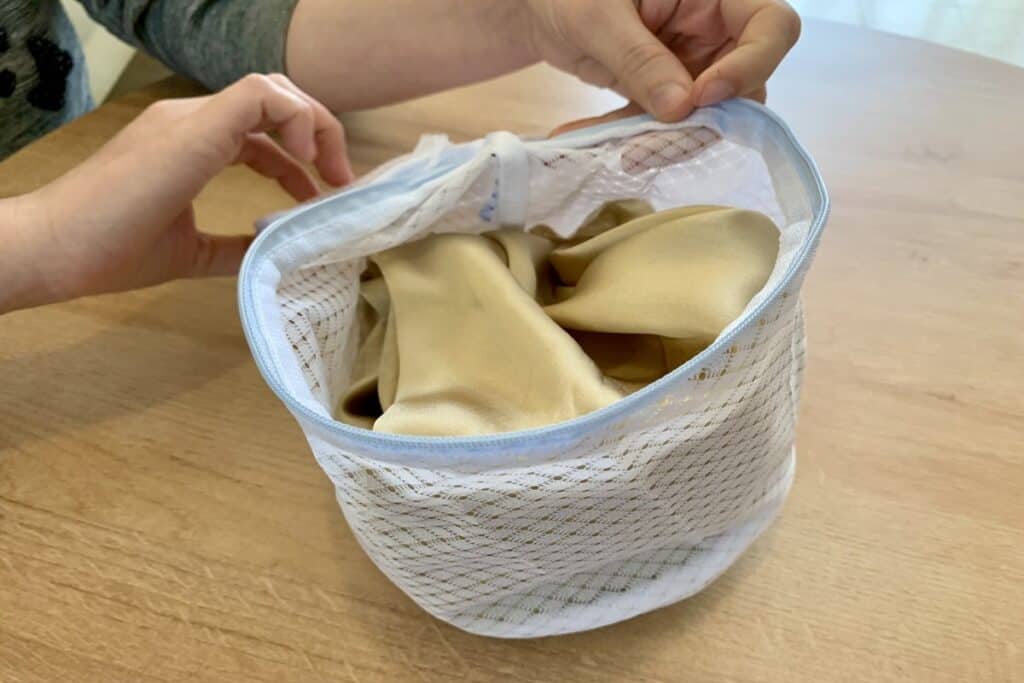

Alternatives to Drying Silk in a Dryer
Now, let’s talk about the safer and recommended alternatives for drying silk without risking damage:
- Air-Drying: This is the gold standard for drying silk. Lay your silk garments flat on a clean, dry surface and let them air-dry naturally. This gentle method prevents shrinkage, heat damage, and preserves the silk’s natural luster.
- Hanging to Dry: If you’re short on space, you can also hang your silk items to air-dry. Use a sturdy, rust-free hanger to prevent any stretching or distortion.
- Removing Wrinkles: To gently remove wrinkles from your silk garments, try one of these methods:
- Hang the item in a steamy bathroom for a few minutes, then gently smooth out the wrinkles with your hands.
- Use a handheld garment steamer to carefully steam out the wrinkles.
- Lightly mist the silk with water and roll it up in a towel for a few hours, then gently reshape and hang it to dry.
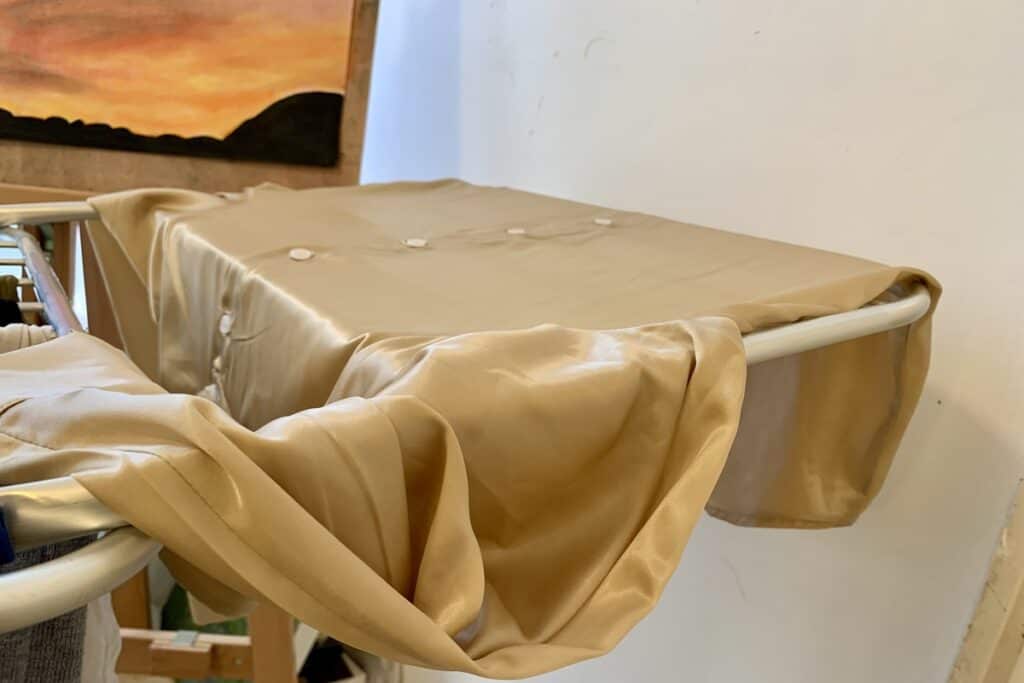
Special Considerations for Different Types of Silk
Not all silk is created equal. Some types are more sensitive to dryer heat and mechanical action than others:
- Pure Silk (100% Silk): This is the most delicate form of silk and should never be put in a dryer. Air-drying is the only safe option.
- Silk Blends: Fabrics that contain a blend of silk and other fibers, such as cotton or polyester, may be slightly more resilient to dryer use. However, it’s still best to air-dry or use the most delicate dryer settings.
- Fake Silk (Synthetic Fibers): Synthetic fabrics like polyester or rayon, which are sometimes marketed as “silk-like,” can typically withstand dryer use better than real silk. However, they lack the natural luster and breathability of genuine silk.
How to Fix Silk Ruined in the Dryer
Oh no, you put your silk in the dryer, and now it’s a shrunken, wrinkled mess! Don’t panic; there may still be hope. Here are some tips:
- Act Quickly: As soon as you realize your mistake, remove the silk from the dryer and try to reshape it gently with your hands.
- Steam Treatment: Carefully steam the silk garment, taking care not to scorch the fabric. The steam can help relax the fibers and reduce some of the shrinkage and wrinkles.
- Professional Restoration: In some cases, the damage may be too severe for DIY fixes. Consider taking your silk garment to a professional dry cleaner or textile restoration specialist. They have specialized techniques and equipment to potentially restore your silk item.
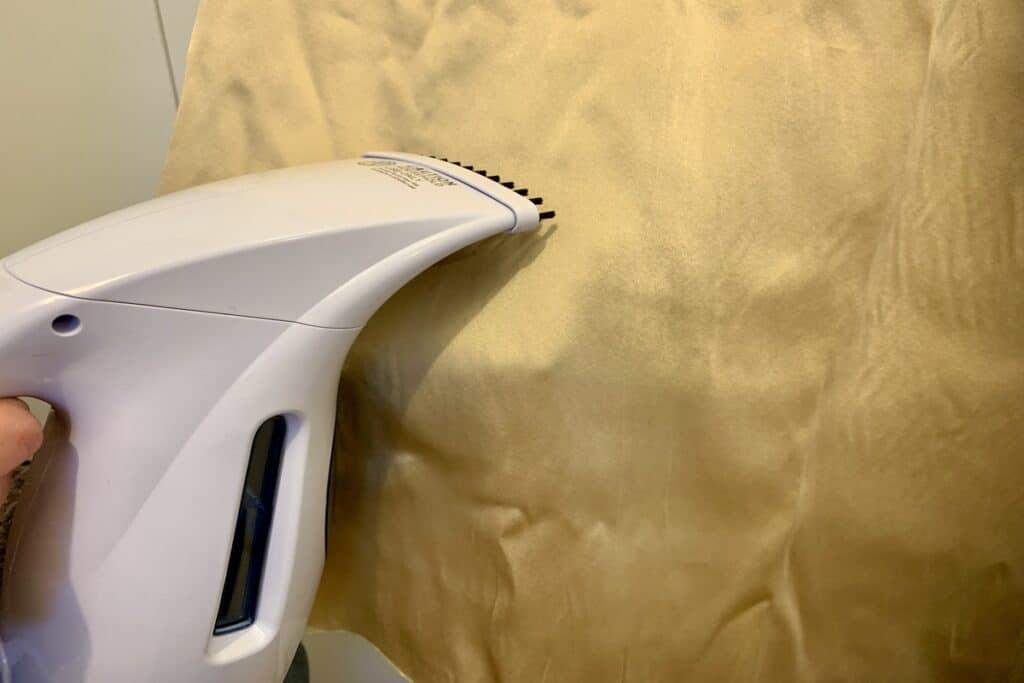
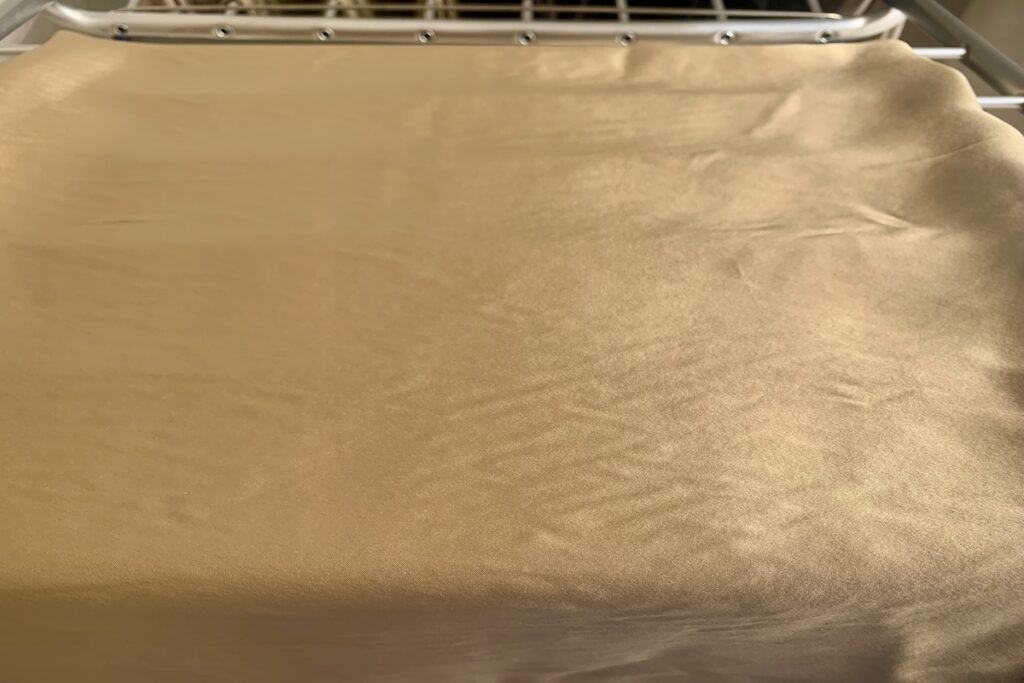
Can I Use Dryer Balls or Tennis Balls When Drying Silk in the Dryer?
No, it’s not recommended to use dryer balls or tennis balls when drying silk in the dryer.
These items can cause excessive friction and agitation, leading to further damage to the delicate silk fibers.
If you must use the dryer for silk, it’s best to avoid any added items that could potentially roughen up the fabric.
Is It Safe to Put Silk-Lined Items in the Dryer?
Silk-lined items, such as silk-lined jackets or coats, should still be treated with caution when it comes to dryer use.
Even though the silk may be on the interior, the heat and tumbling action can still potentially damage or shrink the silk lining.
It’s generally safer to air-dry these items or use the delicate/air dry cycle if absolutely necessary.
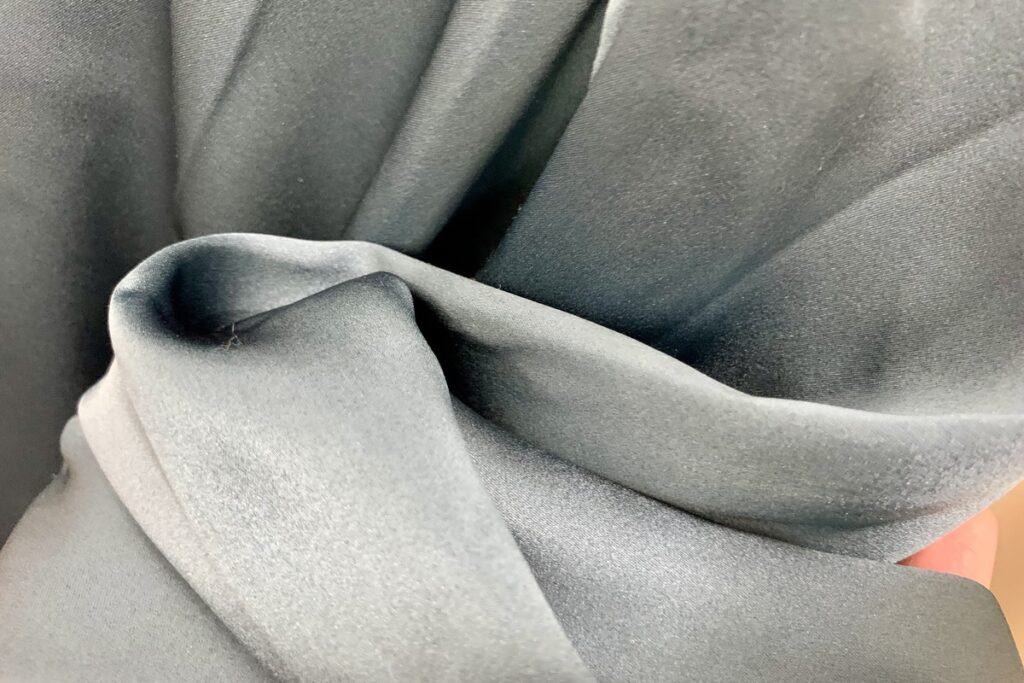
Can I Revive Shrunken Silk by Stretching or Blocking It?
Attempting to stretch or block shrunken silk can be a risky endeavor.
Silk fibers are delicate and can easily tear or break if stretched too far, especially after being subjected to the heat and agitation of a dryer.
If the shrinkage is minor, you may be able to gently reshape and steam the silk to help relax the fibers slightly.
However, if the shrinkage is significant, it’s best to seek professional restoration services to avoid further damage.
Conclusions
As you can see, putting silk in the dryer is a risky proposition.
The combination of heat and mechanical action can cause irreversible damage, including shrinkage, loss of luster, and even fiber degradation.
To extend the life of your silk garments and maintain their luxurious quality, it’s best to embrace the art of air-drying.
Treat your silk with the care and respect it deserves, and it will reward you with its timeless beauty for years to come.
Remember, a little extra effort in caring for your silk is a small price to pay for preserving the elegance and longevity of these exquisite fabrics.
Quick Reference Table: Silk Care and Drying Methods
| Silk Type | Recommended Drying Method | Dryer Safety |
| 100% Pure Silk | Air-drying (flat or hanging) | Never use a dryer |
| Silk Blends | Air-drying preferred, or delicate/air dry cycle if necessary | Use with caution |
| Silk Pillowcases/Sheets | Air-drying or delicate/air dry cycle | Slightly safer than clothing |
| Fake Silk (Synthetic) | Regular dryer use may be okay but can damage luster | Not applicable |
Remember, when in doubt, always err on the side of caution and choose air-drying for your precious silk garments.
